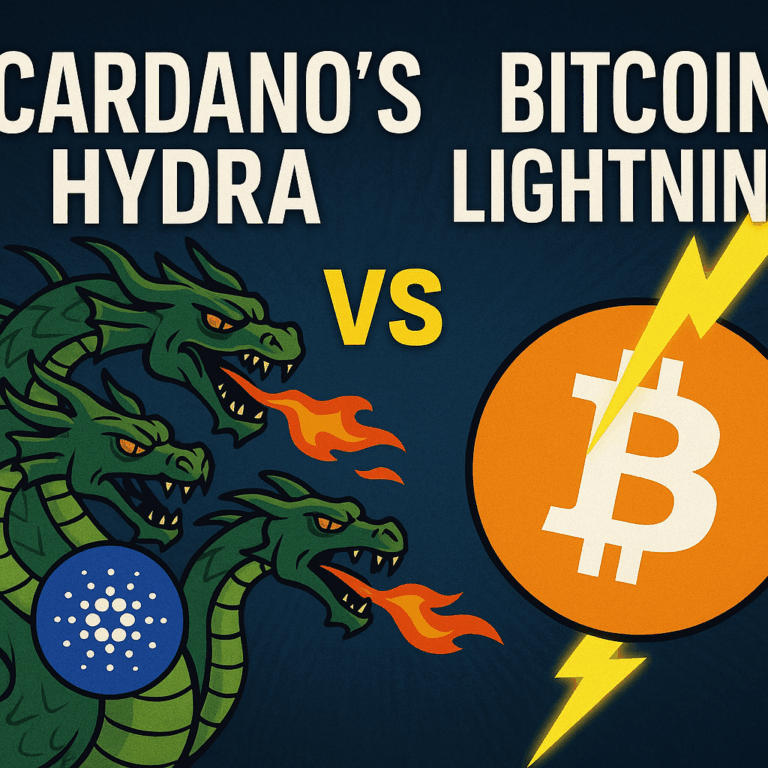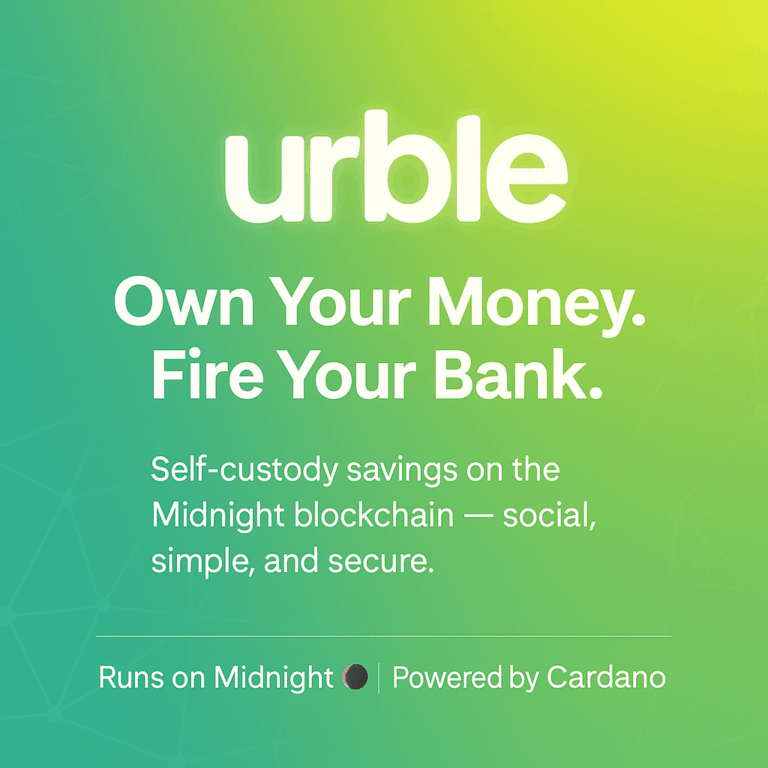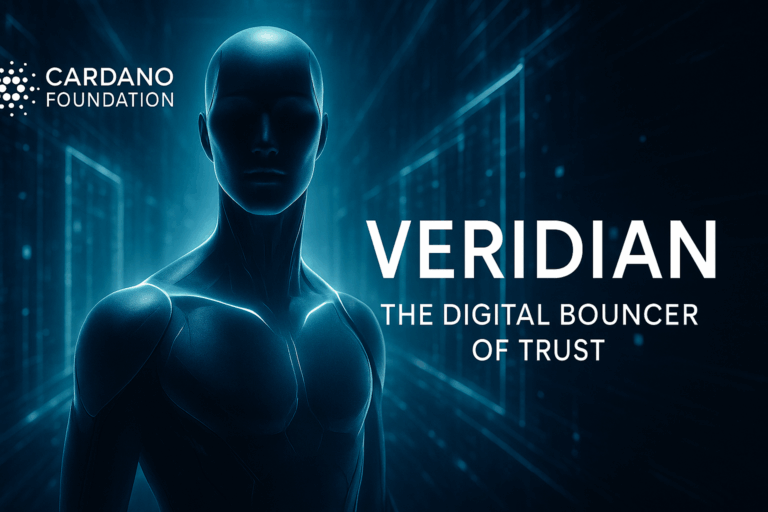Midnight: Why Charles Hoskinson Says It Changes Everything
Some moments in crypto feel like turning points. Charles Hoskinson’s latest whiteboard session on
Midnight was one of them. Instead of another high-level overview, he delivered a
deep, uncompromising manifesto about where blockchain has been, why it stalled, and what a fourth
generation must solve before billions of people can realistically join the system.
This article breaks down that entire presentation in a structured, understandable way. No two-hour video
required. If you’re interested in deeper Cardano and Midnight research, you can also explore related
reads on ZeitgeistPool.com such as
WTF Is Cardano DeFi Really? , What Is the NIGHT Token?, or WTF Is ZEIT?
.
1. From Bitcoin to Ethereum to Cardano: What Came Before Midnight
Crypto began with a narrow but revolutionary idea: move value online without permission from banks or governments.
- Bitcoin (Gen 1) solved decentralized value transfer.
- Ethereum (Gen 2) added programmability through smart contracts.
- Cardano (Gen 3), developed by Input Output Global (IOHK), introduced a research-first approach to scalability, interoperability, and governance.
Yet, even with these achievements, three foundational problems remained unresolved across the entire
industry: privacy, identity, and cooperation. Midnight targets these directly, aiming to become the
fourth generation of blockchain.
2. Midnight’s Goal: Solve the Three Missing Pillars
Hoskinson identifies three core issues all blockchains still struggle with:
Rational Privacy
Privacy shouldn’t mean hiding everything from everyone. Nor should transparency mean exposing your entire life on chain.
Rational privacy allows selective disclosure: your doctor can see your records, your university can see your transcripts,
but the entire world cannot.
Identity
The internet never had a universal identity layer. Blockchains didn’t fix that.
Midnight aims to combine decentralized identifiers (DIDs) with privacy-preserving proofs so humans, agents, devices,
and assets can authenticate without sacrificing personal data.
This aligns with identity work conducted by both IOHK and the Cardano Foundation.
Cooperation
Today’s chains compete for liquidity and users. Midnight proposes a cooperative model: letting networks share security,
users, data, and economic benefits. A system like this could not only coexist with Cardano through
EMURGO’s commercial ecosystem, but enhance it.
3. Midnight’s Privacy Architecture: Kachina, Nightstream, and a Hardware-Aligned Future
Midnight’s greatest innovation is its privacy engine, which aims to unify on-chain and off-chain computation across
ZK proofs, multiparty computation, trusted execution environments, and post-quantum cryptography.
Kachina: Selective-Disclosure Smart Contracts
Kachina enables developers to decide which elements of a transaction are public or private, allowing rich applications
that behave more like the real world.
Nightstream: A Post-Quantum, GPU-Accelerated Privacy Layer
Nightstream is engineered to leverage the same exponential hardware gains powering AI. As GPUs become more powerful,
Midnight’s privacy proofs automatically become faster and cheaper. This avoids ASIC dependency and ensures Midnight
remains aligned with mainstream computing.
Fully Homomorphic Encryption (FHE)
FHE allows computation on encrypted data without ever decrypting it. Combined with latticed-based cryptography,
Midnight gains a way to let users keep custody of private data while still enabling validation, analytics, and coordination.
This philosophy mirrors the broader approach of research-driven cryptography pioneered by IOHK and partners in academia.
4. Identity: The Missing Layer of the Internet
Midnight integrates W3C DIDs with rational privacy to create a universal, private authentication model. This system can represent:
- Humans
- AI agents
- IoT devices
- Digital or physical assets
Identity without privacy leads to surveillance. Privacy without identity leads to unusable systems. Midnight merges both,
opening the door to compliant DeFi, healthcare data exchange, and agentic commerce where the user remains in control.
Readers interested in how Cardano aligns with these ideas may enjoy
Cardano Launches REEVE — Blockchain Reporting Revolution
.
5. What Midnight Enables: Practical Applications
Regulated DeFi Without Centralized Gatekeepers
DEXs like Uniswap could operate two flows: a normal one and a regulated one. Midnight evaluates compliance requirements
privately and returns cryptographic proofs—not user data.
This preserves decentralization while maintaining regulatory compatibility.
Healthcare Data Coordination
Medical providers rarely synchronize patient data. Midnight can coordinate across clinics, hospitals, and specialists
without forcing them to trust each other or reveal full datasets.
AI Agent Commerce
Tomorrow’s digital economy will be dominated by autonomous agents executing actions on your behalf. Midnight gives them
enough insight to act while withholding sensitive personal context.
6. Cooperative Economics Instead of VC-Centric Tokenomics
Hoskinson’s critique of early tokenomics is blunt. Midnight rejects VC pre-mines, insider allocations, and speculative
launch games. Instead, it uses a large, multi-chain airdrop model dubbed the Glacier Drop.
It allocates tokens to eight major ecosystems, including Bitcoin, Ethereum, Cardano, Solana, BNB Chain, Avalanche, XRP,
and BAT. Unclaimed allocations can later be scavenged through CPU mining and recovered in a “lost and found” mechanism
embedded in the genesis block.
This mirrors Cardano’s existing emphasis on fairness, as seen in staking-focused blogs like
How ZEIT Delegators Most Likely Get Double the Rewards
.
7. Dual Token Model: NIGHT and DUST
Midnight splits the monetary system into two components:
- NIGHT — deflationary, governance, consensus, long-term value
- DUST — predictable, stable computational fuel
This separation prevents price volatility from impacting developers while still offering a deflationary asset model for
long-term holders. It also allows public and private assets to exist simultaneously.
8. Capacity Exchange: Pay Network Fees in Any Asset
Midnight includes a native exchange layer that allows fees to be paid in assets like ETH, ADA, BTC, SOL, stablecoins, or others.
The system converts them automatically into DUST.
This means Midnight feels native to every ecosystem. Users never need to hold DUST directly unless they want to.
It’s a similar philosophy to staking flexibility on Cardano, highlighted in
ZEIT’s Midnight Staking Overview
.
9. Minotaur: Multi-Resource Consensus
Instead of choosing between Proof of Stake or Proof of Work, Midnight uses both—plus additional resource types—through a
mechanism called Minotaur.
Minotaur allows several networks to participate in securing Midnight, spreading block rewards across ecosystems and
creating a cooperative, not competitive, security model.
10. Intents: The Future Beyond Procedural Smart Contracts
Traditional transactions are procedural: do step 1, then step 2, then step 3.
Intents are declarative: buy X under condition Y by time Z.
Intents let users specify outcomes while Midnight privately routes execution to the best venue—whether that is Cardano,
Ethereum, Bitcoin, or elsewhere. No one can front-run your intent or infer personal data from it.
This makes Midnight the natural candidate for an intention layer for Web3.
What Do You Think?
Is Midnight truly the fourth generation of blockchain, or is the industry still searching for it?
Share your take in the comments.
Unterstütze den ZEITGEIST Pool – Single Pool Operator. 0% Fees. 100% Cardano Vibes.
Frequently Asked Questions About Midnight
What is Midnight and why is it different from other blockchains?
Midnight is a fourth-generation blockchain built by Input Output Global.
Unlike previous generations that focused on programmability or scalability alone, Midnight combines rational privacy,
decentralized identity, and cooperative cross-chain economics. This allows it to act as both a privacy-preserving
smart contract network and a trustless coordination layer for multiple blockchains.
What is the NIGHT token used for?
NIGHT is Midnight’s deflationary governance and consensus token. It represents long-term ownership and control
of the network. Computational fees, however, are paid with DUST, allowing Midnight to maintain predictable pricing.
For more about the Midnight token model and ecosystem, see
this detailed NIGHT overview
.
How does Midnight handle privacy without compromising compliance?
Midnight uses a system called rational privacy, built on customizable zero-knowledge proofs through Kachina
and enhanced by Nightstream. Transactions can selectively reveal information only to approved parties.
This enables compliant DeFi flows—for example, regulated trading—without revealing full identity or transaction history
to the public network.
Will Midnight replace Cardano smart contracts?
No. Midnight is designed as a privacy-preserving network that works alongside Cardano, not instead of it.
Through cooperative economics, hybrid applications can run on both networks depending on what is most efficient.
Developers can build apps that feel native on Cardano but use Midnight for private or regulated components.
How is Midnight funded if there is no VC pre-allocation?
Midnight uses a fair-distribution model called the Glacier Drop, allocating tokens to users across eight major
blockchain ecosystems. A scavenging period and lost-and-found mechanism ensure all value eventually disperses
to real participants—without venture capital pre-mines or insider allocations.
Can I stake ADA to benefit from Midnight?
Midnight integrates deeply with the Cardano ecosystem. While ADA itself is not used for Midnight consensus,
Cardano staking still contributes to the broader infrastructure supporting interoperability.
If you’re looking to maximize staking efficiency and ecosystem exposure, consider delegating to pools like
ZEIT, a long-running single-pool operator aligned with Midnight research and development.




